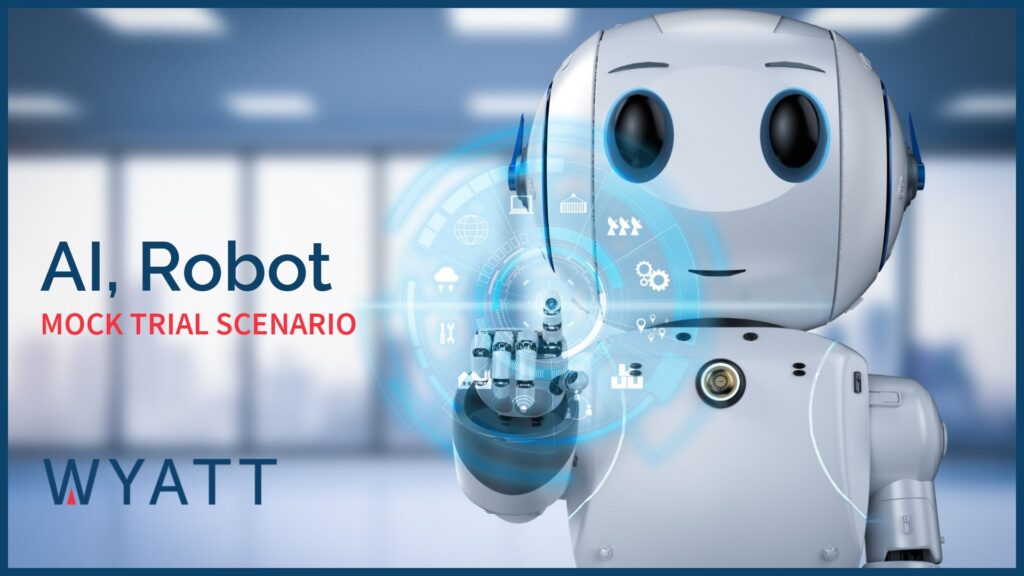Employment Law Report
AI, Robot – Employment Law Considerations: Key Takeaways for HR Professionals from Wyatt’s Mock Trial

By: Mitzi D. Wyrick
For the past several years, Wyatt has been an exhibitor at the KYSHRM Conference that draws in hundreds of Human Resources professionals from across the state. We have also had the opportunity to conduct a mock trial at the conference to show how an employment law case can unfold. This year, our mock trial concerned a small marketing company and its use of artificial intelligence (AI) at several points in the hiring process, such as creating a job description, identifying candidates for interviews, and conducting a virtual interview. The scenario presented issues of potential gender discrimination due to the development of the job description and the selection of candidates. In addition, the four mock juries considered whether the virtual interview violated the Employee Polygraph Protection Act (EPPA).
Four juries deliberated and came to mixed results, highlighting the relatively large variance that can occur with juries, even those who have heard exactly the same facts, arguments and witnesses.
Jury No. 1: Defense verdict on discrimination claim, awarded Plaintiff $40,000 for violation of the EPPA.
Jury No. 2: Verdict for Plaintiff on both counts with an award of $240,000.
Jury No. 3: Verdict for Plaintiff on both counts with an award of $210,000.
Jury No. 4: Defense verdict on discrimination claim, awarded Plaintiff $20,000 for violation of the EPPA.
The scenario highlighted the growing use of AI in employment decisions and the potential for abuse in recruiting and selecting candidates.
Key Takeaways:
1. There is increasing interest at both the state and federal levels in regulating the use of AI in employment decisions, including by the EEOC, which has found that AI could have an adverse impact on candidates with disabilities.
2. Be aware of the law in your jurisdiction because some states and localities require the disclosure of the use of AI and/or the ability of candidates to opt out of the process.
3. Know and understand how and where AI is being used in your employment processes. Audit both the inputs used in developing AI and the outputs created by AI to determine if the use of AI results in biased decision-making.
4. Determine whether your company needs a policy on the use of AI, both in the employment context and more broadly.
5. Keep humans involved in the process and make sure there is adequate oversight of the use of AI and any decisions generated by AI.
If you are ever in need of guidance in a situation like this or have any other labor and employment issues, please do not hesitate to reach out to one of our Labor & Employment lawyers.
